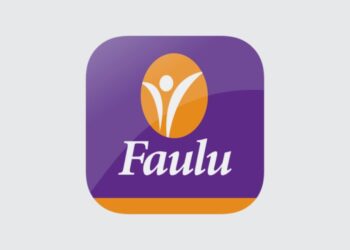Amidst the competition for attention and prominence, one metric stands tall as a beacon of online credibility and influence – domain authority (DA). Domain authority is a numerical representation of a website’s authority, ranging from 1 to 100. A higher DA not only enhances a website’s visibility in search engine results but also establishes trust among users. Domain authority serves as a compass, guiding websites toward higher visibility, credibility, and trustworthiness.
Mastering off-page SEO
Off-page SEO plays a significant role in determining domain authority by building a website’s credibility, trustworthiness, and online reputation.
a. Quality backlinks
Acquiring high-quality backlinks from authoritative and relevant websites is arguably the most potent factor in increasing DA. Focus on building natural, organic backlinks through guest posting, influencer outreach, and creating link-worthy content that naturally attracts links from other websites. When reputable websites link to your site, search engines consider your content valuable and trustworthy, positively impacting your domain authority.
b. Link diversity and relevance
Diversify your backlink profile by obtaining links from various sources, such as blogs, news sites, social media platforms, and industry directories. Additionally, ensure these links are relevant to your niche, as contextually relevant links carry more weight in search engine algorithms.
c. Social media signals
Social media activity and engagement can indirectly influence domain authority. Content that is shared and liked on social media platforms can drive more traffic to your website, increasing its visibility and potentially leading to more backlinks. This social proof can enhance your site’s credibility and, consequently, its domain authority.
d. Brand mentions and citations
Mentions of your brand or website across the web, even without a direct link, can positively impact your DA. Search engines recognize these brand mentions as signs of authority and credibility, which can boost your domain authority. Monitor brand mentions and encourage positive reviews and citations on reputable platforms.
Technical optimization and website health
Technical optimization and website health play crucial roles in determining domain authority because they directly impact the overall user experience, search engine visibility, and credibility of a website.
a. Crawlability and indexability
Properly configured XML sitemaps, robots.txt files, and canonical tags help search engines crawl and index your site efficiently. When search engines can understand your website’s structure and content, it leads to better rankings and, consequently, a higher DA.
b. Site speed
Fast-loading websites provide better user experiences. Users are more likely to engage with and share content from fast sites. Additionally, search engines consider page speed as a ranking factor, contributing to a positive user experience and, subsequently, higher DA.
c. Optimized internal linking
Implement a logical and well-structured internal linking strategy. Internal linking, which connects different pages within the site, enhances user experience and helps search engines understand the site’s structure and content relevance. Proper internal linking not only assists users in navigating your website but also distributes authority evenly across your site, reinforcing the importance of various pages in the eyes of search engines.
d. Impeccable on-page SEO
Optimize your website’s on-page elements, including title tags, meta descriptions, headers, and image alt texts. Conduct thorough keyword research and strategically incorporate relevant keywords into your content and meta data to enhance your website’s visibility in search engine results pages (SERPs). Higher visibility can lead to more organic traffic, positively affecting domain authority.
e. Quality content is king
The bedrock of a high DA website lies in its content. Craft compelling, informative, and unique content that engages your audience. Websites with engaging content and intuitive navigation tend to have lower bounce rates (the percentage of visitors who leave the site after viewing only one page) and higher dwell time (the amount of time visitors spend on the site). These metrics indicate quality content and can contribute to a higher domain authority.
f. Mobile-friendly design
With the increasing use of mobile devices, search engines prioritize mobile-friendly websites, impacting your DA significantly. Technical optimization involves responsive design and ensuring that the site functions well on various devices and screen sizes.
g. Secure connection (HTTPS)
Websites with SSL certificates (resulting in URLs starting with “https://”) are favored by search engines. Technical optimization includes implementing HTTPS to establish a secure connection between the user and the website.
h. Enhanced user experience
User experience (UX) is paramount. A well-designed, intuitive, and easily navigable website encourages visitors to explore further, reducing bounce rates. Faster loading times, clear calls-to-action, and user-friendly interfaces contribute significantly to a positive user experience.
i. Proper HTML markup
Search engines rely on well-structured HTML to understand the content hierarchy. Proper usage of HTML tags (like headings, paragraphs, and lists) makes it easier for search engines to comprehend your content.
j. Error handling
Websites should have custom error pages (like 404 pages) and redirect strategies in place to handle broken links. Technical optimization involves identifying and fixing such issues, ensuring a smooth user experience.
k. Regular updates
Websites that are frequently updated with relevant and valuable content are seen as more authoritative. Regular updates, such as publishing blog posts or news articles, can enhance domain authority over time. Regularly update your website with fresh, relevant, and valuable information to keep your visitors coming back for more.
Continuous monitoring and adaptation
Continuous monitoring and adaptation are vital because they help you identify and rectify issues promptly, align your strategies with evolving search engine algorithms, stay competitive, enhance user experience, manage your backlink profile effectively, and create content that resonates with your audience.
a. Identifying issues
Regular monitoring helps in identifying technical issues, such as broken links, server errors, or security vulnerabilities. Addressing these issues promptly ensures that your website remains accessible and user-friendly, positively impacting user experience and, consequently, DA.
b. Analyzing user behavior
Continuous monitoring allows you to analyze user behavior on your site, including bounce rates, time on site, and the number of pages visited. Understanding how users interact with your content helps you make necessary adjustments to improve engagement and satisfaction, indirectly influencing your DA.
c. Staying updated with algorithm changes
Search engine algorithms frequently change. Continuous monitoring helps you stay informed about these changes and adapt your SEO strategies accordingly. By aligning your website with the latest best practices, you can maintain or enhance your search engine rankings and DA.
d. Competitor analysis
Regularly monitoring your competitors’ online strategies can provide valuable insights. By adapting to market trends and learning from competitors’ successes and failures, you can refine your own strategies to remain competitive. This adaptability can contribute to higher organic traffic and, consequently, a better DA.
e. Content relevance
Monitoring the performance of your content (such as blog posts, articles, and videos) helps you gauge what works best for your audience. By adapting your content strategy based on what resonates with users, you can create more relevant and engaging content, attracting natural backlinks and improving your website’s authority.
f. Link profile management
Continuous monitoring helps you assess your backlink profile. By identifying low-quality or toxic backlinks, you can disavow them to prevent negative impacts on your DA. Additionally, you can actively seek high-quality backlinks from authoritative sources, enhancing your website’s credibility and authority.
g. Technical updates
Technology and web standards evolve. Regular monitoring allows you to implement necessary technical updates, ensuring your website remains compatible with new devices and browsers. This compatibility is essential for providing a seamless user experience, indirectly contributing to your DA.
h. Feedback integration
Listening to user feedback and adapting your website based on user suggestions can improve user satisfaction. A user-friendly website with valuable content encourages positive user interactions, potentially leading to more social shares, backlinks, and improved DA.
Conclusion
In the vast realm of the internet, where competition is fierce and attention spans fleeting, cultivating a robust online presence is imperative. By adhering to the principles of quality content, meticulous on-page and off-page SEO, technical optimization, and continuous monitoring, you can unravel the secrets to increasing your domain authority. Embrace these strategies with diligence, adaptability, and a commitment to excellence, and watch your website ascend the digital echelons, becoming a beacon of authority in your niche.















